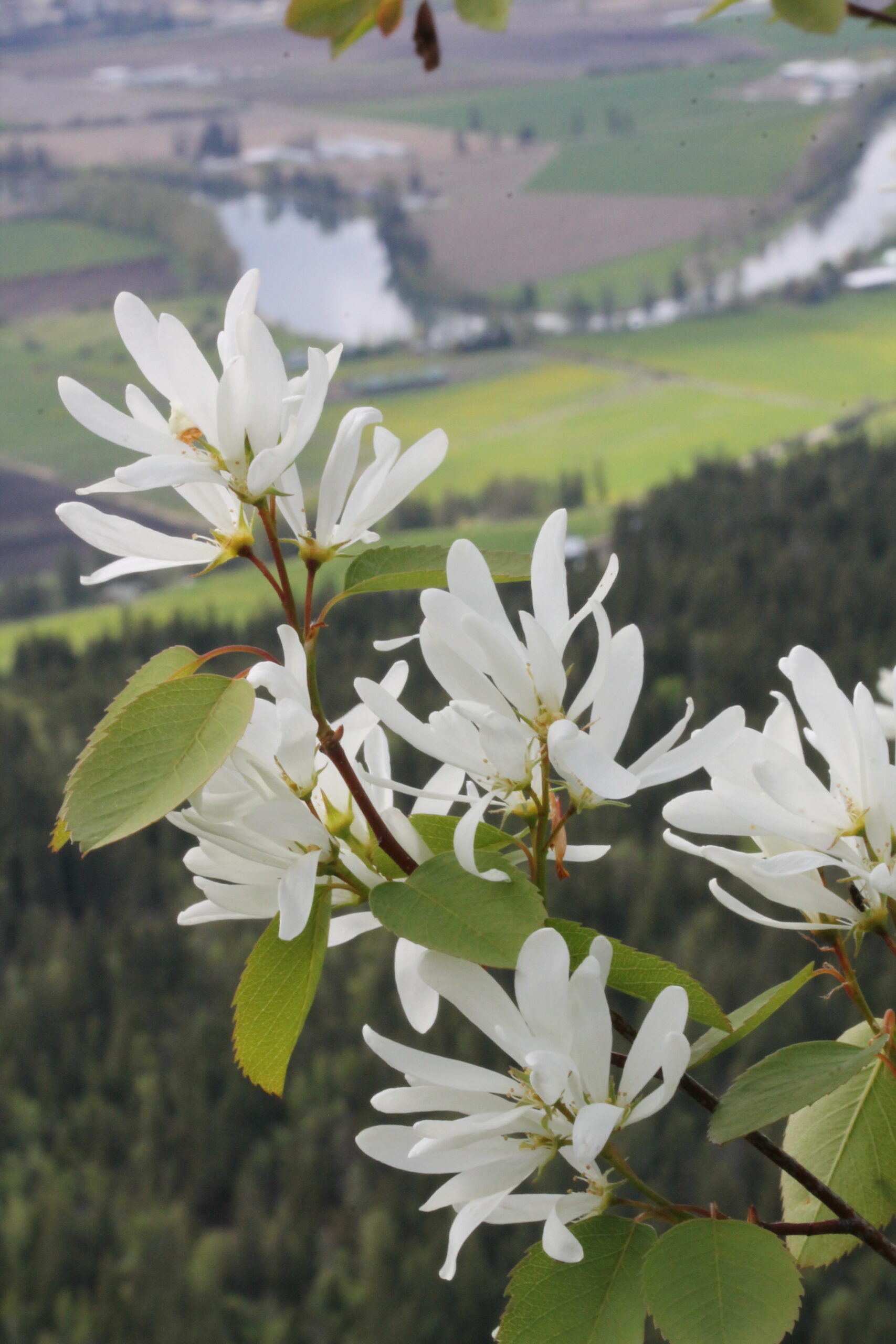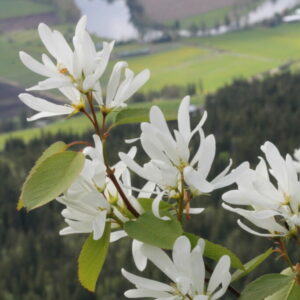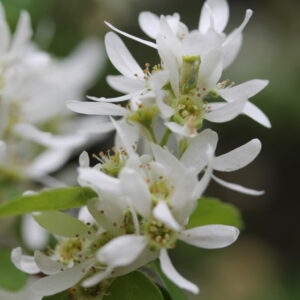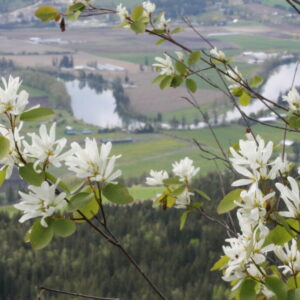
Family: Rose or Rosaceae
Ecology/ Botany:
This widespread shrub has fragrant spring blooms that turn into summer berries for many birds, wildlife, and people. There are many varieties, and although they appear in moist climatic regions in Interior Cedar Hemlock forest zones, they more commonly grow in dry regions in Interior Douglas Fir and Ponderosa Pine forest zones.
Medicinal/ Other Uses:
The berries were a common food to Indigenous people and can be eaten raw or dried. Medicinally, they have used various parts to make remedies for a wide range of ailments. It is nourishing for the central nervous system, consisting of your brain & spinal cord. The berries are high in flavonoids which are antioxidant, antibacterial, antiviral, and anti-inflammatory. Current research shows promise for the use of these berries as treatment for diabetes. The flower essence has been used for cognitive function, energy balance, integrating use of the whole brain, and communication between heart and head.




